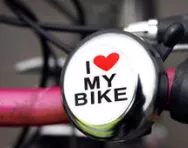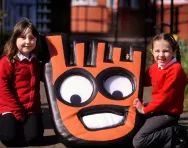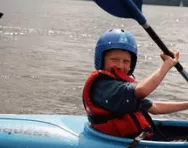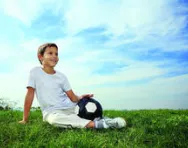Important update from TheSchoolRun
For the past 13 years, TheSchoolRun has been run by a small team of mums working from home, dedicated to providing quality educational resources to primary school parents. Unfortunately, rising supplier costs and falling revenue have made it impossible for us to continue operating, and we’ve had to make the difficult decision to close. The good news: We’ve arranged for another educational provider to take over many of our resources. These will be hosted on a new portal, where the content will be updated and expanded to support your child’s learning.
What this means for subscribers:
- Your subscription is still active, and for now, you can keep using the website as normal — just log in with your usual details to access all our articles and resources*.
- In a few months, all resources will move to the new portal. You’ll continue to have access there until your subscription ends. We’ll send you full details nearer the time.
- As a thank you for your support, we’ll also be sending you 16 primary school eBooks (worth £108.84) to download and keep.
A few changes to be aware of:
- The Learning Journey weekly email has ended, but your child’s plan will still be updated on your dashboard each Monday. Just log in to see the recommended worksheets.
- The 11+ weekly emails have now ended. We sent you all the remaining emails in the series at the end of March — please check your inbox (and spam folder) if you haven’t seen them. You can also follow the full programme here: 11+ Learning Journey.
If you have any questions, please contact us at [email protected]. Thank you for being part of our journey it’s been a privilege to support your family’s learning.
*If you need to reset your password, it will still work as usual. Please check your spam folder if the reset email doesn’t appear in your inbox.
Bikeability explained
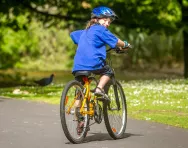
Many of us have fond childhood memories of cycling to school by ourselves or going off on long bike rides with our friends (and without our mums and dads). But as parents, the thought of allowing our own children to cycle on today’s busy roads can be daunting.

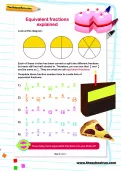
Start a unique learning programme!
- Weekly programme for each school year
- Worksheets sent direct to your inbox
- Keeps your child's learning on track
Cycling is not just a quick, easy and free way for our kids to get around; it’s also great exercise and a healthy, fun and sociable pastime that they can enjoy now and in the future. That’s why many schools offer Bikeability courses to all pupils, ensuring they’re safe and well prepared to take their bikes on the road.
Bikeability explained
Bikeability is a cycle training programme that teaches children practical skills and gives them the understanding and expertise they need to ride their bikes on the road. It replaces the old-fashioned Cycling Proficiency courses that many of us did as children.
There are three levels of Bikeability training.
Bikeability Level 1
The Level 1 programme is the most basic stage of Bikeability. It takes place in a safe space such as a school playground, usually in groups of up to 12 children. They’re taught to control and master their bikes away from traffic. They learn to:
- Prepare themselves and their bike for cycling.
- Get on and off their bike without help.
- Start, pedal and stop with control.
- Use gears and avoid obstacles.
- Look all around and behind, staying in control of their bike.
- Share space with pedestrians and other cyclists.
Bikeability Level 2
‘Level 2 is designed to give children the skills and confidence they need to ride on local roads, of the type that are often found around schools,’ says Paul Robison, director of the Bikeability support team and chair of trustees of the Bikeability Trust. In small groups of up to six children per instructor, kids learn to deal with traffic on short journeys, such as the trip to school. They’re taught to:
- Prepare for on-road cycling.
- Start and finish an on-road journey.
- Recognise typical hazards.
- Let others know what they’re about to do, e.g. through hand signals.
- Know where to position themselves on the road.
- Pass parked vehicles and side roads.
Bikeability Level 3
‘Level 3 trains children to cycle on busier main roads, and to negotiate hazards such as traffic lights and roundabouts,’ Paul says. This is delivered on a one-to-one basis or in groups of up to three, so the instructor can tailor the content to each person’s individual needs, such as their route to school. They learn to:
- Prepare for a journey.
- Understand advanced road positioning.
- Pass queuing traffic
- Perceive and deal with hazards.
- Understand driver blind spots.
- React to hazardous road surfaces.
When do children do Bikeability at school?
‘Most schools who run Bikeability courses do so in Year 5 or 6,’ says Paul. ‘Usually, children will complete the Level 2 programme, although all elements of Level 1 are covered before children are taken onto the road.’ The training generally takes place during the school day.
Level 1 Bikeability is intended for children in Year 4 and below, and Level 3 for those in the early years of secondary school, although far fewer schools offer courses at these stages.
Who teaches Bikeability?
Bikeability providers have to register with the Department for Transport’s Bikeability Scheme. This proves that they’re providing quality training, and that matters such as child protection and insurance are covered. ‘To become an instructor, you have to complete a four-day course with a follow-up element to refine your skills in working with children,’ Paul says.
Do all schools run Bikeability courses?
No. Currently, about half of all schools in England offer Bikeability training. ‘At the moment, cycling is not part of the National Curriculum, so there’s no obligation for schools to offer Bikeability or other similar training, although there are many advocates for including it in the Curriculum,’ says Paul.
Who pays for Bikeability?
The Department for Transport makes a grant contribution toward the cost of Bikeability in England. This usually covers the entire cost of the training, so in most cases it’s free for children to take part. However, in some cases the funding doesn’t completely cover the cost. In this case, schools can either pay the shortfall from their own budget, or ask parents for a contribution.
What if your child can’t ride a bike?
Bikeability is recommended for children who can ride without stabilisers, and most schools that take part in the scheme offer Level 2 courses, which presuppose a certain degree of competence in cycling.
‘If there are several children who can’t ride a bike, schools may decide to run a Bikeability Learn to Ride course, which is specifically aimed at those children, with smaller student-to-instructor ratios,’ says Paul. However, this isn’t guaranteed, and children who genuinely can’t ride may not be able to take part in Bikeability.
If you’re concerned that your child isn’t at the standard required, you might consider making learning to ride a family project for the weekend, or booking some one-to-one tuition to get them up to speed before Bikeability begins. You do, however, have the right to opt your child out of Bikeability if they don’t want to take part.
What equipment does your child need?
Generally, you’ll need to make sure your child has a bike that’s the right size for them, in good condition with pumped-up tyres and working brakes. Helmets are usually required, and high-vis vests are often provided. They’ll also need suitable clothing for the weather.
‘If your child doesn’t have a bike, many Bikeability providers have a pool of bikes and can lend your child one for the duration of the course,’ says Paul.
What if your child fails?
All children who take part in Bikeability receive a certificate, and those who meet the required standard also get a badge. ‘If your child doesn’t successfully complete all of the necessary elements, their instructor will record the areas they need to work at on their certificate, so you can focus on developing those skills at home or with further tuition,’ says Paul.
Do children have to pass Bikeability to be allowed to cycle to school?
No. Although some schools recommend that children don’t cycle to school alone until they’ve completed Bikeability, the decision about how your child gets to and from school is up to you as a parent.
What if your child’s school doesn’t do Bikeability?
If Bikeability isn’t offered by your child’s school, there may be courses running in the local area that they can join in with. Alternatively, you can contact a local Bikeability provider using the course finder on their website and arrange your own training, either on a one-to-one basis or by grouping together with other families, which reduces the cost. Typically, group Bikeability courses cost around £40 per child.
Some local councils offer cycle training, which may be free of charge. If your child is part of the Scouting or Guiding movement, they may also be able to do some training through their group and earn an activity badge when they complete all the elements.
